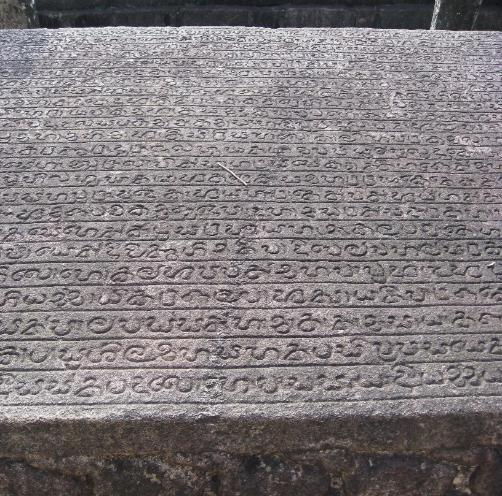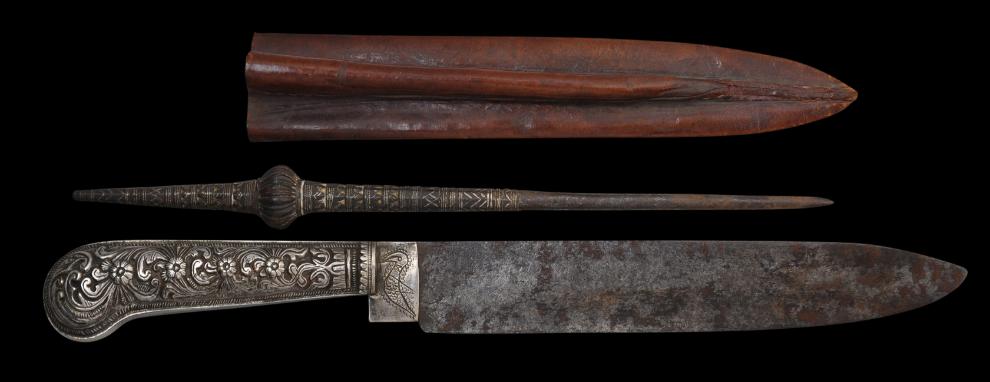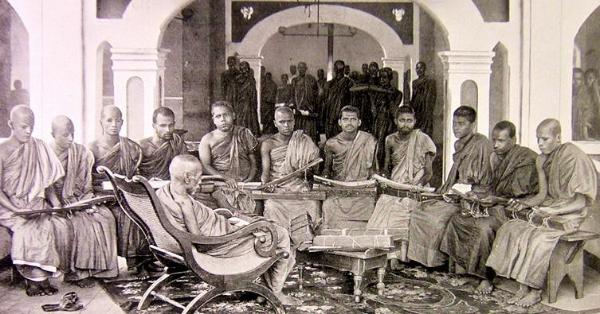
Sri Lankan Scribe’s Stylus & Knife
Palm Leaf Scribe’s Silver Mounted Knife & Stylus Set
Kandy, Sri Lanka
19th century
length of knife: 29.6cm; length of stylus: 35cm
This fine stylus and knife set which includes the original leather sheaf was used in the preparation of palm leaf manuscripts (ola) in Sri Lanka. The knife was used to trim treated palm leaves that were then written on using the stylus. The manuscripts were used for religious texts, monastic records, records of land grants, legends and so on. Stylus and knife sets are relatively rare. Knives are found separately as are styles but rarely are they found together. The National Museum in Colombo has just eleven such sets (De Silva & Wickramasinghe, 2006, p. 207).
The knife features a silver handle elaborately chased with swirling leaf and flower patterns in a manner suggestive of a Kandy provenance. The silver strip that joins the blade to the handle is engraved, both sides, with a bird motif. The blade itself is stamped twice to one side with a local Sri Lankan maker’s mark.
The stylus (
panhinda) is of cast steel and is chiselled with geometric motifs around the handle end. These are copiously inlaid with strips of silver. The handle terminates with a solid, gardrooned sphere that acts as a counter-weight.
The knife and stylus fit into a locally-made stiff, hand-sewn leather sheaf. This, along with the rest of the set, has a fine patina and obvious age.
The Preparation of Palm Leaf Manuscripts in Sri Lanka
Most Sri Lankan palm leaf manuscripts are written on the prepared leaves of the Talipot palm (Corypha umbraculifera). It is one of the largest palms to grow in Sri Lanka and grows to a height of 15-35 metres. The trees take 40 to 100 years to reach maturity and before the tree dies, it shoots out from its top an inflorescence that can be as long as 7 metres.
The material used for preparing the writing leaf is taken from young trees and from the unopened leaf buds of such trees. Each leaf bud grows to 3 to 7 metres long and can hold up to 100 leaflets.
The preparation of the writing leaf required much care. A young tree would be selected and when the leaf bud was about to burst open it was cut off and slit open. The leaflets were then separated and removed one by one. The midribs of the leaflets were removed and the leaflets were them immersed in a vessel filled with cold water.
The vessel was then placed over a slow fire until the water reached boiling point. Thereafter the heat was reduced and the leaflets were allowed to simmer for several hours. The leaflets then were taken out and allowed to dry for three days in the sun. Thereafter the leaflets were exposed to the cooler night air for three nights, allowing them to become supple.
The next stage of the preparation process involved each leaf blade being weighted and then pulled up and down over the smooth surface of a cylinder of wood which was usually the smoothed trunk of an areca palm (the tall, thin palm that produces betel nut.)
The manuscript pages then were cut from the leaves. They were punched with one or two holes using a steel punch. The holes later were used in the filing of the pages – a bamboo slither was passed through a hole in each page so that all the pages could be held together. Held together, the edges of the pages were then singed with a hot iron and burnt to remove any irregularities so that each page would be of uniform length and width.
Writing on each page was done with a stylus, such as the example here, that had a steel point which was sharpened from time to time on an oiled stone. The writing then had to be blackened otherwise it was too faint. This was done with ink made from combining fine dust made from charcoal from leaves, commonly cotton plant leaves, with an alluvial resin. The mixture was heated until a black resinous oil was produced. This was rubbed over the manuscript pages with a cloth so that the whole page was covered with black. This was then rubbed away with sifted rice bran, leaving the black resin in the scratched depressions left on the page by the style.
Palm leaf books were not normally illustrated.
Once the pages were finished, two covers were produced for them. These were made to size. The edges almost always were bevelled and the inner and outer surfaces usually were painted, usually with colourful designs. The covers were made from one of various types of local woods such as ebony, iron wood, val sapu, gammalu, jak or milla.
The leaves of the book and the covers then were strung together with a cord, either a cotton cord or one made from the fibre of the niyanda leaf.
References
Ranatunga, D.C., From the Cradle: Glimpses of Sri Lankan Folk Culture Portrayed at the Martin Wickramsinghe Museum of Folk Culture, The Martin Wickramsinghe Trust, 2007.
De Silva, W.A,
Catalogue of Palm Leaf Manuscripts in the Library of the Colombo Museum, Volume 1, 1938.
De Silva, P.H.D.H & S. Wickramasinghe,
Ancient Swords, Daggers & Knives in Sri Lankan Museums, Sri Lanka National Museums, 2006.
Provenance
UK art market
Inventory no.: 1921
SOLD
to see fine examples of Sri Lankan palm leaf manuscripts.

High priests reading from palm leaf books, circa 1900.
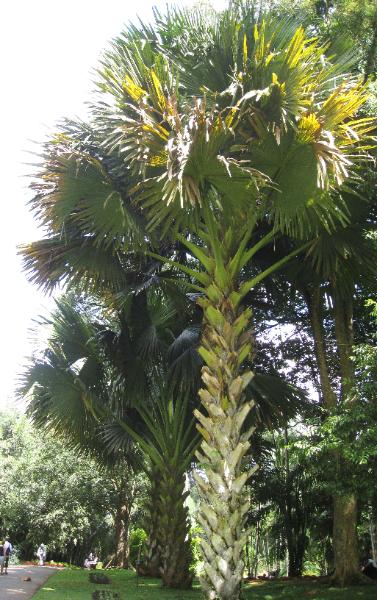
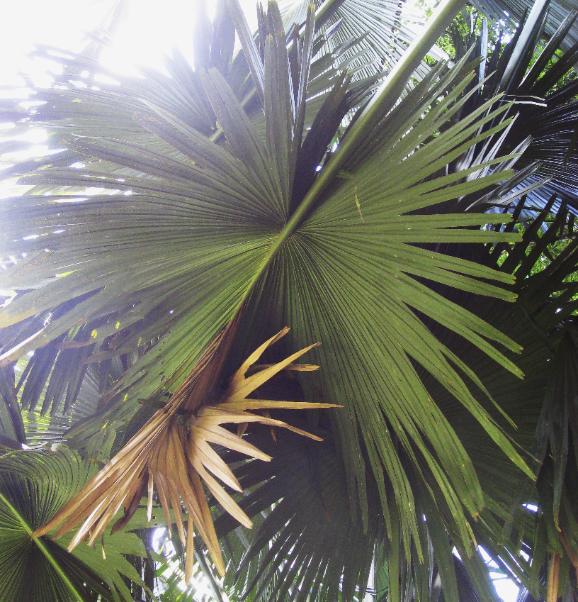
Talipot palms, Kandy, central Sri Lanka.
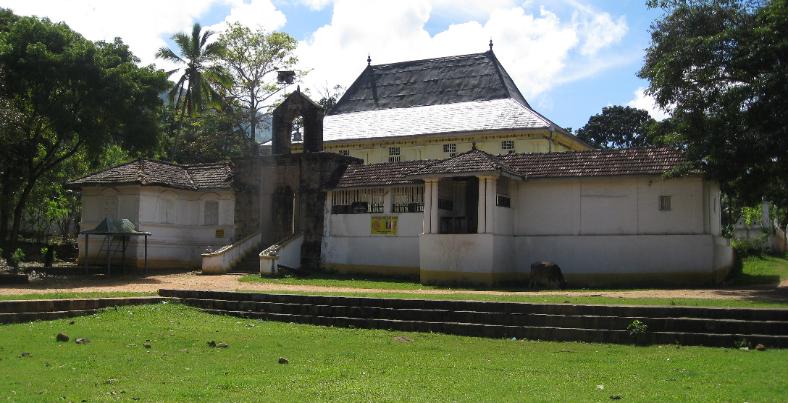
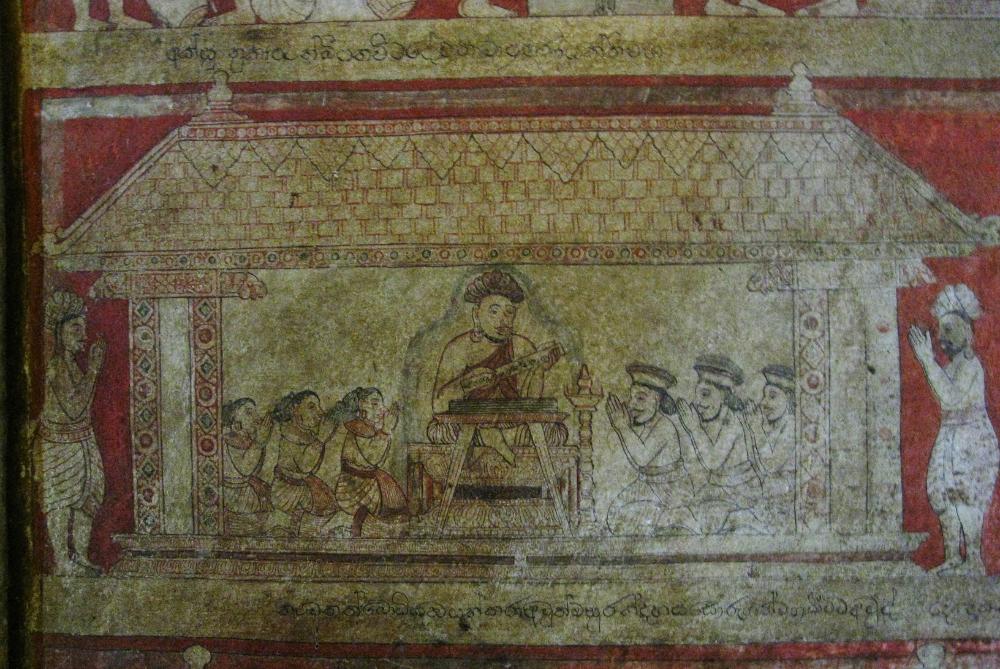
The monastery of Potgul Magila Vihara, central Sri Lanka, which holds perhaps central Sri Lanka’s most extensive collection of ola manuscripts.
An eighteenth century cave wall painting at Degaldoruwa Temple, central Sri Lanka, which shows a Kandyan king reading from an ola manuscript.
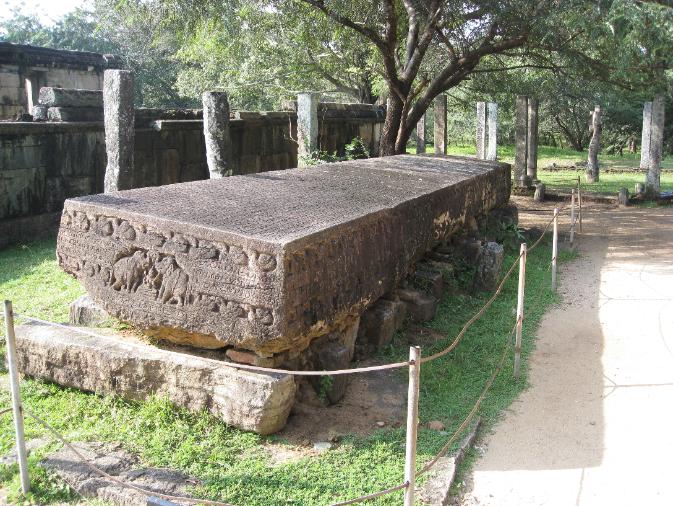
large palm leaf manuscript. It was completed during the reign of King Nissankamalla (1187-1196AD),
